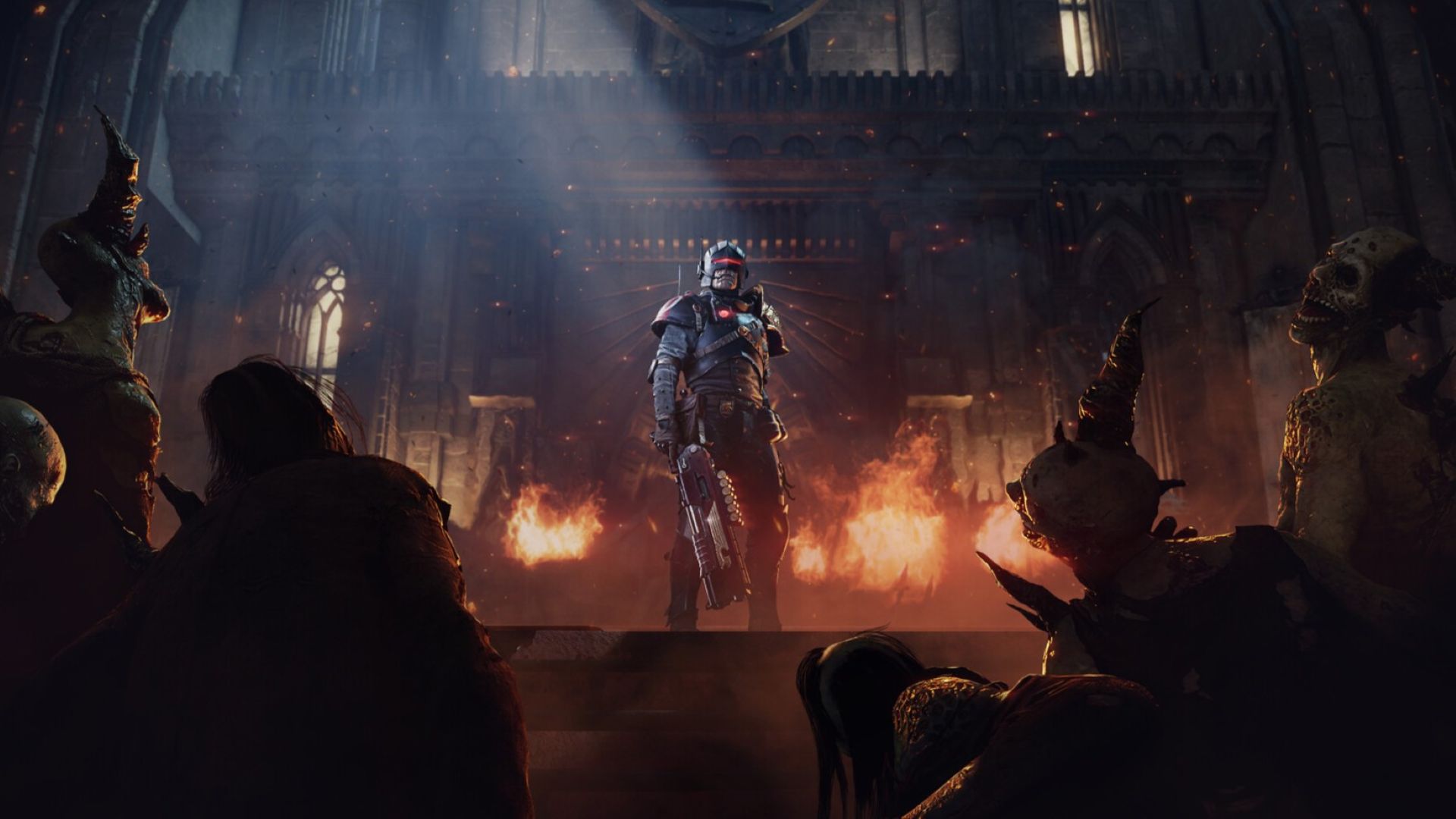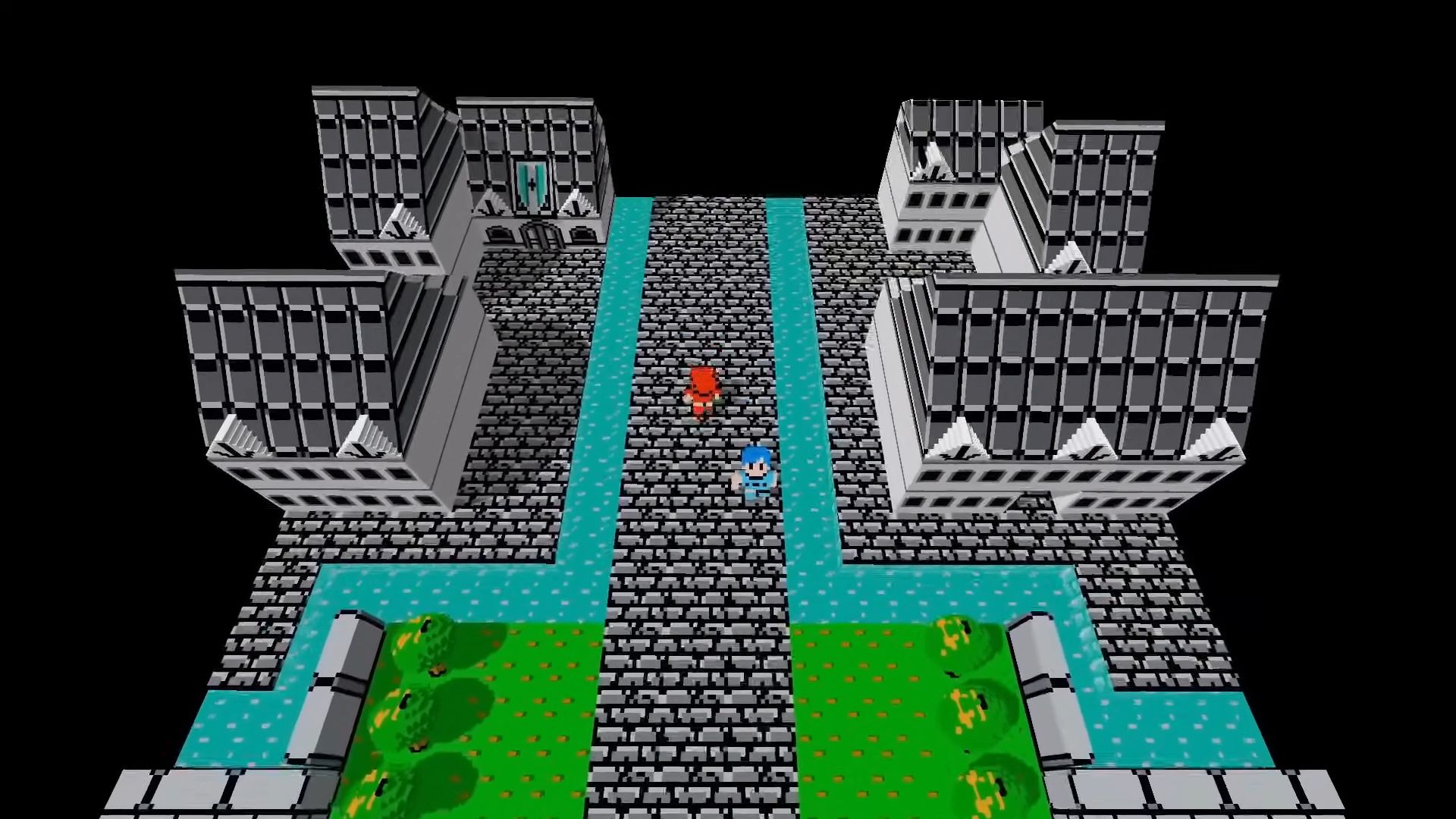
I’ve called games ambitious before, but please believe me when I say that Terra Invicta is one of the wildest, strangest, and biggest ideas I’ve ever seen a single development team try to take on. All at once it’s a grand strategy-scale geopolitics simulator, an alien-invasion battler, and a hard sci-fi solar system industrialization simulator with integrated real-time newtonian-physics-driven fleet combat. But while I got sucked into its world, that fresh mix of ideas suffers from some very conventional strategy game failures in its interface, accessibility, and balance.
One part of Terra Invicta is an engaging simulation of a world where secret coalitions manipulate its nations. They fight in the shadows over humanity’s response to the threat of an alien invasion, managing national allegiances, research, economies, espionage, and militaries. You take control of one of these seven factions, each of which has its own unique asymmetric victory conditions, and command their leadership council to build a movement that can reach your goals in a fascinating, ever-shifting political landscape.
The other part of it is a detailed simulation of human expansion into the solar system, including the militarization and industrialization of space, the likes of which I’ve never seen in a video game. It’s complete with real-time space combat and years-long travel between solar bodies. Using a jaw-dropping array of near-future and science fiction techs, you’re expected to figure out how best to build ships, colonies, and stations able to produce the space resources you need to win the fight.
Either of these two games would be pretty fun on its own, and they both have interesting ideas alongside very cool, well-designed systems, but at times they’re so different that the whiplash I experienced just from playing minute to minute got extreme. Terra Invicta’s weakest links are the places where these two intricate games come together, and they’re so different that you could very easily love one and hate the other. Even if you love both ideas like me, it isn’t exactly easy to walk the walk of alien arrival geopolitics and chew the gum of Newtonian physics-based battles at the same time.
Your early hours will likely be spent just trying to keep your head above water.
Combine that with an interface that’s fighting to keep up with the sheer complexity of the mechanics, let alone allow you to manipulate them, and much of your early time with Terra Invicta is likely to be spent just trying to keep your head above water. I lost my first campaign of Terra Invicta after just over 50 hours played, in part due to the frustrating learning experience of working out the interface between space and Earth’s political shenanigans. My battle of resistance ended as alien factions on Earth crippled too many nations, while my efforts in space lost steam amid a confusion of weird mechanics and ship-design woes. It all culminated in a death spiral I didn’t realize I’d entered until it was 10 hours too late to escape.
Death spirals are never fun, but it did reveal the clever nature of Terra Invicta’s overall scenario, where Earth’s vast resources can allow you to meet your goals… if you’re able to leverage them. The aliens may have massive technological advantages at first, but there are literally billions of humans, and they’re sitting on the single largest concentration of usable resources in the solar system and already have an economy in place to use them.
Spacer Soldier Spy
Perhaps the coolest thing in Terra Invicta are the seven conspiratorial factions. In turn, they aspire to submit to, work alongside, prove themselves to, flee from, fight back against, exterminate, or profit from the aliens. Each faction is nicely represented by a key character, all of whom are fleshed out by quotes and voiced dialogue every time new research or major events pop off. It’s nice that you get flavor from every faction leader over time, as it’s possible that a weak faction won’t be one you engage with directly.
Every one of the factions has wildly different plans. When playing as The Resistance you’re trying to strengthen Earth to fight off the aliens, unite its people, and preserve the human way of life as much as possible. Humanity First, meanwhile, has a similar goal but with more genocidal flavor, and is willing to do anything to wipe the aliens out — like encouraging terrorist bombings on pro-alien nations or nuclear strikes against alien targets. It’s easy for extremist factions to rack up atrocities, a very clever mechanic that hits perpetrators of war crimes with permanent penalties to their global reputation.
At the other extreme are The Servants, who think that aliens are divine beings and whose intentionally easier campaign has you align with the alien cause. Where other factions are fighting what Aliens do, Servants are desperate to contact and communicate with them in a twisting campaign story that takes Terra Invicta to unexpected places given its larger premise.
The ideological differences between factions can lead to interesting conflicts.
These ideological differences can lead to some interesting conflicts. In my campaign as The Resistance, I did things like form international coalitions to invade nations and overthrow governments friendly to the aliens. In one exceptional moment I had to unite a feuding US and Europe in an alliance to invade an alien-controlled nation seeking nuclear weapons. In another I had to convince Brazil’s neighbors to let them move armies that could exterminate growing alien plant life.
I forged alliances of convenience with groups like Project Exodus, who – while they were squandering resources on trying to escape alien conquest – at least weren’t actively working for the bad guys. It’s cool that you can never really “kill” an idea, either. You can weaken or even cripple one of the other factions by stealing their resources, or by assassination, but they will inevitably recruit a new inner circle and rebuild in time.
Your faction’s council is how to put your plans into action, picking recruits from a broader pool of candidates with their own loyalties, backgrounds, and traits. I had one counselor who was a paranoid cynic, for example, and while that made her an excellent spy and counterspy it also made her hard to trust with valuable assets, as her true loyalty was difficult to gauge. She also refused to work in unstable and dangerous environments, which are fairly common in a world where the revelation of hostile alien life starts to plunge countries into chaos.
I got pretty attached to my council members. One of my favorites was an Argentine military colonel who led my, uh… deniable operations. (It’s hard for enemy factions to gain popular support when their agents get abducted or killed if they go public.) Her military experience was key, as Counselors’ jobs affect the missions they can take on. Spies and soldiers have obvious uses in a shadowy global war, while diplomats and social or religious leaders are great at spreading your cause’s ideology, giving you more of the influence resource. Meanwhile top scientists contribute to research efforts as economists and businessmen help find funding or acquire and manage organizations that act like equipment for your council.
You have limited slots on your council, though, and you can’t be good at everything. Counselors can only undertake two missions each month, so you constantly have to make hard choices about priorities. Should I send my Resistance spy to investigate a suspected enemy agent or to weaken Servant control in Argentina?
I also love that you can recruit and maintain criminals to support your cause: Sure, the Los Zetas Cartel are bad people, but it’s hard to complain when we’ve got them funneling $40 million a month toward fighting the alien menace.
Terra Invicta clearly wants to simulate every aspect of our world – at least at the macro level.
All this geopoliticking and fighting takes place on a detailed and fairly robust simulation of Earth. The overview screen tracks things like global opinion about each faction, Earth’s overall GDP, and the economies of nations, but also details like the level of human-caused climate change. (Or… is it human-caused?) Terra Invicta starts in 2022, which is accurate down to details like Russian forces occupying Eastern Ukraine and Crimea, and it’s very clear that it wants to simulate every aspect of our world – at least at the macro level.
The coolest example of this is how research works, with two kinds of projects going at any time. There are public projects every faction contributes to that show the bigger arc of what humanity is working towards as well as private projects that benefit your faction alone. You have to split your research output between them, as does everyone else.
The big public projects unlock things for everyone, and those are often double edged swords. They can be political movements that allow unification of countries into single nations, like a united EU… or break them up into smaller, weaker targets for alien conquest. They can also be the development of tech allowing things like cleaner nuclear fission to buffer against inevitable energy crises. If you contribute the most to a public project you get to choose what’s next on the docket for humanity’s future, and you get an edge in unlocking private projects that spin off of that tech. It’s a serious benefit in the sprawling web of a tech tree – which I loved in spite of its lack of organization thanks to a decent search function.
All of those public techs let your faction unlock private research to get smaller-scale benefits at the same time. Those can be exclusive access to political movements, corporations, or benefits for your agents like defoliants for alien plants. On the space side they’re often ultra-specific tech like new rocket engines, weapons, or asteroid-mining techniques. I liked how many choices of private research I had at any given time, adding a good tension to each decision. Some are less exciting variants of similar options, but it’s fun when you’re picking between new plasma rocket engines, an economic method to bolster military defense, or enhanced cybernetics for your counselors — and you want them all yesterday.
With all of that intricate detail it seems very strange when the simulation leaves out obvious cascading effects. For instance, the economies of individual countries are tracked by GDP, wealth disparity, and productive capacity, but at the same time countries are individual units to such a degree that apocalyptic economic events in one country don’t appear to affect their neighbors at all. That level of simulation is something developer Pavonis Interactive will want to improve over the course of Early Access.
Likewise, countries themselves are brain dead without a global conspirator pulling the strings. It’s very hard to get a foothold in countries with large populations and economies, so in at least one of my games I saw China sit stagnant for over a decade following the alien invasion. It’s hard to imagine that one of the world’s most powerful nations would sit and do nothing – not even develop its space program – as madcap events kick off everywhere around it.
The simulation of Earth is fun to see in action, but it’s also overwhelming.
All that simulation works well for the most part is, and is fun to watch in action. I can see that for many people the biggest draw here will be the conspiracy-vs-conspiracy thriller world that you can engage in and develop. You could create a unified African continent, or break up the EU. Playing as the Servants I engineered a permanent peace and eventual reunification of India, Pakistan, and Bangladesh into a diverse and democratic world superpower. (I mean, I did it for bad reasons, but the sentiment is nice.)
But that simulation is also overwhelming. The struggle to track what’s relevant and interesting to your cause is difficult and only worsened by the interface, which tries heroically to surface relevant information but really struggles to do it in a way that’s useful. For example, there’s no real warning nor indication that the AI is engaging in nuclear war aside from the occasional loud noise, whereupon you then frantically turn the globe looking for mushroom clouds that may fade before you spot them (that might be something you’d want to know more about before the nuclear winter sets in). Wild swings in public opinion that might cause you to lose vital control points in a key nation are relegated to small icons. There can be very little warning that a nation is approaching civil war and regime flip, losing you power. Enemies can get and keep control in nations you hold much easier than you’d think.
These frustrations bite new players the most, but are annoyances even for veterans. You can defend your control, but it’s micromanagement intensive. Optimal strategies involve counterintuitive choices like taking, then abandoning countries, but only by watching the AI do that did I figure it out. I eventually resorted to manually checking the opinion charts and economies of every nation I had, every turn, to keep up.
The biggest detail Terra Invicta ignores, though, is storytelling about the aliens themselves. For much of the early campaign it feels like they may as well not exist. That’s fun during those early X-Files-esque conspiracy years but by the time I’m being told they’re doing terror attacks on civilian populations I’d at least hope to have seen more than a single piece of grainy art depicting one.
Even when you later see, capture, or kill an alien agent it’s quite vague. A mission description might casually reference some kind of alien you’ve neither seen nor heard of before, let alone gotten a text description of. For all that time it spends describing the cool things that its key characters and people are doing, and the revolutionary technologies they’re inventing, sometimes Terra Invicta feels like it’s forgotten that it’s a game about an alien invasion.
…in SPAAAAACE!
At least until you go to space, that is. In space there’s lots going on, much of it in the purple of the alien conquerors – but again, it’s just a wholly different video game from the surface. Space is about strategically and precisely beating others to the resources you need to win, taking hold of them, and never letting go. That fight starts on Earth, as you need its resources to get your first stations and colonies going, but later your space efforts become self-sustaining.
As part of those efforts you’ll build fleets of ships, and can eventually use those to fight against alien ships, though doing so risks severe repercussions as Alien fleets move to destroy your space assets in retaliation.
Building space stations, resource colonies, and shipyards is unparalleled here. Balancing expansion against control, boosting from Earth versus space resource utilization, and local-system construction capacities is as engaging a toybox as you could want. With 350-some stellar objects, there is no simulation in another strategy game to rival Terra Invicta’s both deep and broad model of space exploration.
That said, if you don’t have a solid grounding in hard sci-fi or a great head for physics, the space combat is going to be frustrating and strange. It’s as much about weapons and preparation before the fights as it is about actual choices made during them. You worry about the specific thrust of engines versus how much Delta-V a craft can muster, and how that affects the balance of its performance in battle versus out.
In real-time combat, precisely tweaking maneuver nodes to get specific results can be rough, and the interface here is both slippery and frustrating. I gave up on complex kinetic and energy weapons tactics based on maneuvers by my second fight. I realized that while you can build space warships early on it’s a trap option, a built-in waste of your time. I resorted to overwhelming the enemy with missiles, and that worked pretty well.
Later I tried to build some big, giant, awesome space battleships. Spoilers: My macross fantasies were bad. It went apocalyptically wrong. Seconds into its first combat my Titan-class ship evaporated after a single hit from a tiny alien Destroyer. I never could figure out why, and Terra Invicta wasn’t interested in teaching me. My kingdom for a combat log.
The space gameplay is cool on paper but frustrating in practice.
The space gameplay is cool on paper but frustrating in practice, because by the time you actually start getting real excess resources to play with in space you’re a dozen hours into this game. Don’t get me wrong, it’s good game design to have the complexity of a campaign open up over time, but not when it can be so crucial and swing so hard from victory to defeat so suddenly. Winning the fights you start in space is necessary for the success of most campaigns, but you have no idea how to do it and Terra Invicta won’t teach you how. The only way to learn is to throw yourself at enemy fleets in skirmish mode – you can even export ship designs from an in-progress save – but that ultimately doesn’t have bearing on the strategic situation of your personal campaign.
Perhaps more frustrating is how the Earth layer can intrude into the space one. Enemies will seize control of your stations much like they seize national resources on Earth, but the difference is that the stations took huge private resource investments on your part. Sending a counselor to take them back means months at the shortest, years at the longest, which is crippling to your efforts on Earth while that counselor is unavailable. Sending in your own space fleets to assault with marines works, but in my experience just led to silly situations where control of a 50-person outpost flip-flopped back and forth every few months.
Those kinds of political maneuvers make sense and provide drama on the Earth layer, where huge numbers of people and complex governments are at play, but in space they’re just frustrating. Why are we letting strangers onto our secretive space weapons research facility, then letting them give stirring speeches to seize control, and why aren’t all the marines we stationed there doing anything about it? You can technically do the same to the AI, but practically speaking it requires a lot of good luck and planning, as a very specific, rare counselor trait is required to do it.
Oh, and don’t you dare blow up any non-alien space facilities, no matter how reviled their occupants are. That’s an atrocity on par with a nuclear holocaust and, to quote Fallout 4: “Everyone disliked that.”






